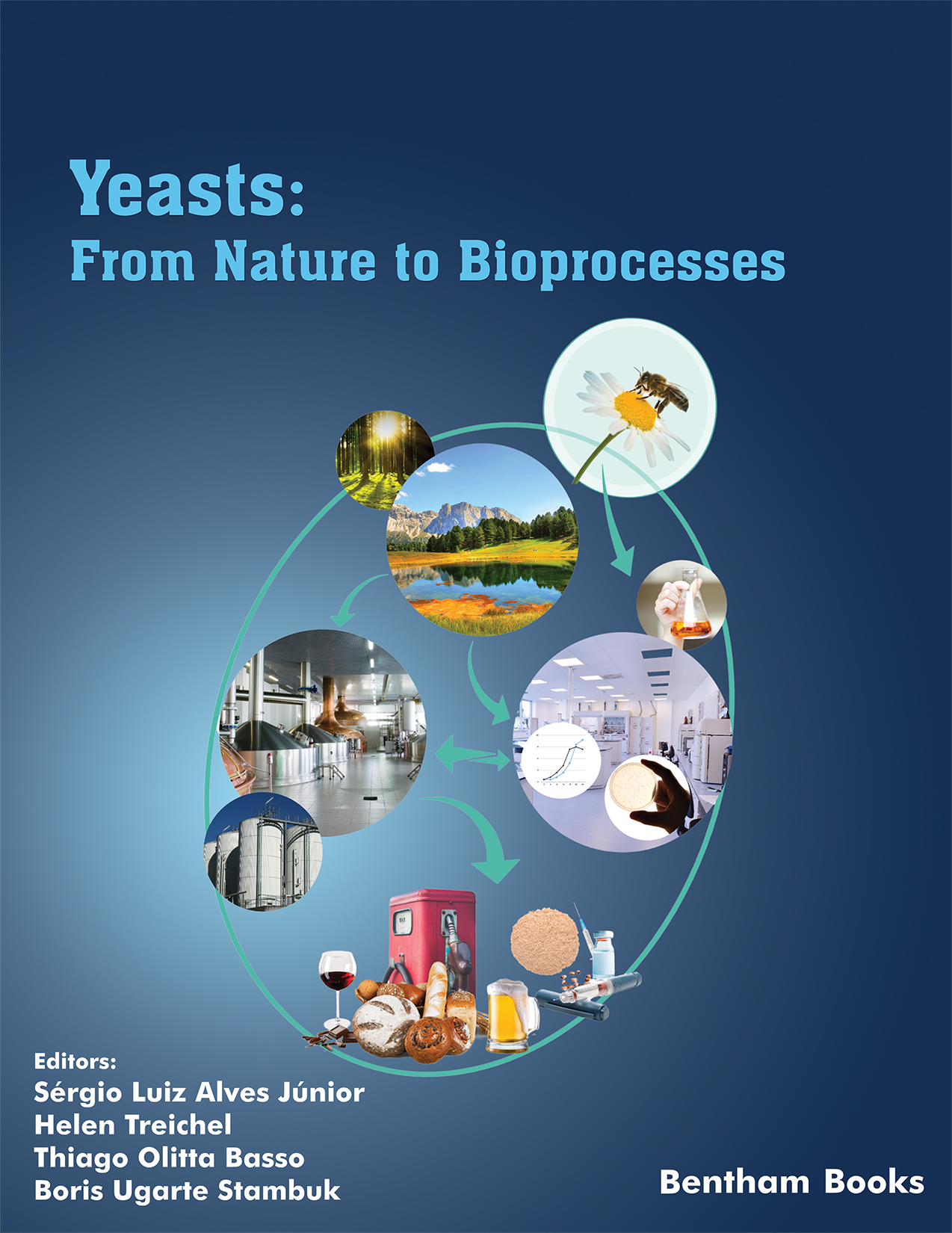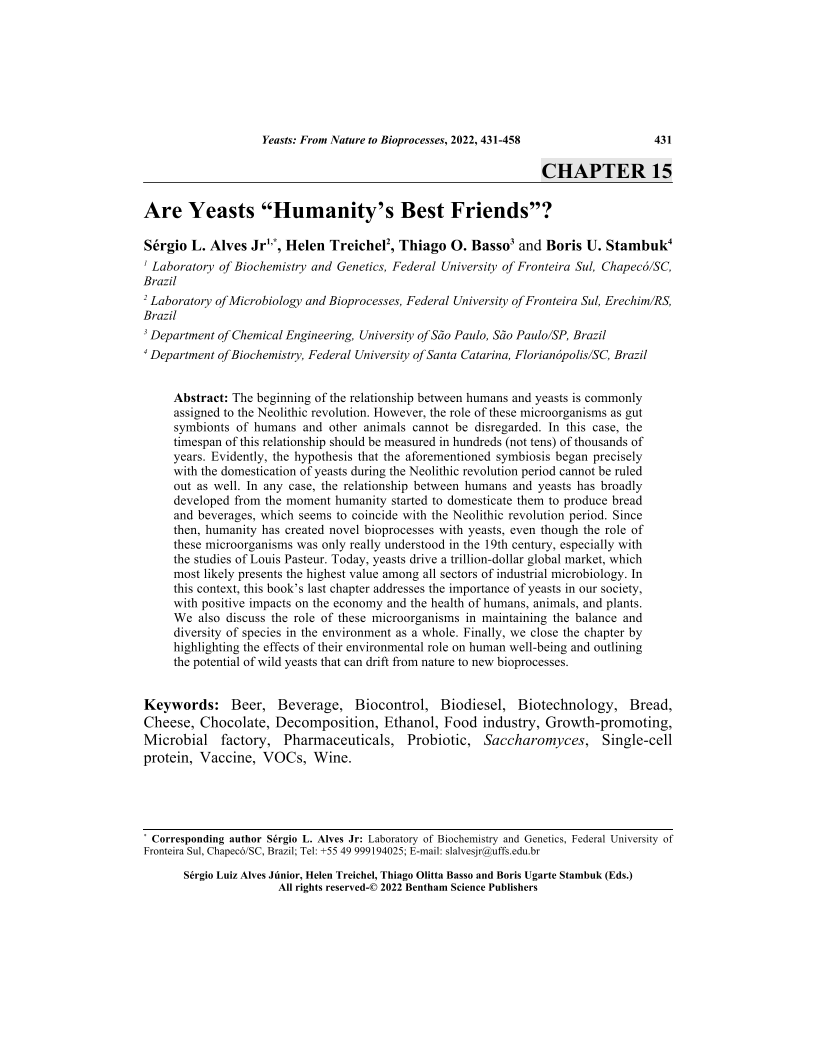Are Yeasts "Humanity's Best Friends"?

- Authors: Sérgio L. Alves Jr1, Helen Treichel2, Thiago O. Basso3, Boris U. Stambuk4
-
View Affiliations Hide Affiliations1 Laboratory of Biochemistry and Genetics, Federal University of Fronteira Sul, Chapecó/SC, Brazil 2 Laboratory of Microbiology and Bioprocesses, Federal University of Fronteira Sul, Erechim/RS, Brazil 3 Department of Chemical Engineering, University of São Paulo, São Paulo/SP, Brazil 4 Department of Biochemistry, Federal University of Santa Catarina, Florianópolis/SC, Brazil
- Source: Yeasts: From Nature to Bioprocesses , pp 431-458
- Publication Date: March 2022
- Language: English
Are Yeasts "Humanity's Best Friends"?, Page 1 of 1
< Previous page | Next page > /docserver/preview/fulltext/9789815051063/chap15-1.gif
The beginning of the relationship between humans and yeasts is commonly assigned to the Neolithic revolution. However, the role of these microorganisms as gut symbionts of humans and other animals cannot be disregarded. In this case, the timespan of this relationship should be measured in hundreds (not tens) of thousands of years. Evidently, the hypothesis that the aforementioned symbiosis began precisely with the domestication of yeasts during the Neolithic revolution period cannot be ruled out as well. In any case, the relationship between humans and yeasts has broadly developed from the moment humanity started to domesticate them to produce bread and beverages, which seems to coincide with the Neolithic revolution period. Since then, humanity has created novel bioprocesses with yeasts, even though the role of these microorganisms was only really understood in the 19th century, especially with the studies of Louis Pasteur. Today, yeasts drive a trillion-dollar global market, which most likely presents the highest value among all sectors of industrial microbiology. In this context, this book's last chapter addresses the importance of yeasts in our society, with positive impacts on the economy and the health of humans, animals, and plants. We also discuss the role of these microorganisms in maintaining the balance and diversity of species in the environment as a whole. Finally, we close the chapter by highlighting the effects of their environmental role on human well-being and outlining the potential of wild yeasts that can drift from nature to new bioprocesses.
-
From This Site
/content/books/9789815051063.chap15dcterms_subject,pub_keyword-contentType:Journal -contentType:Figure -contentType:Table -contentType:SupplementaryData105

